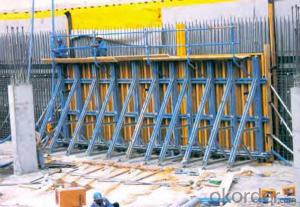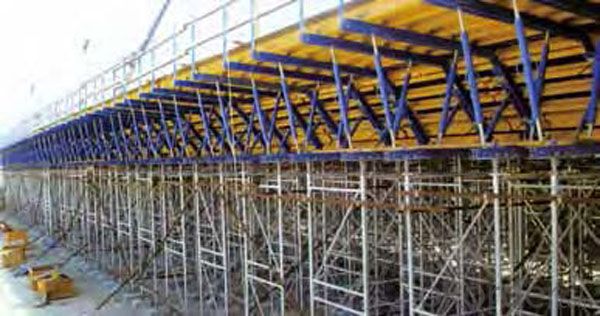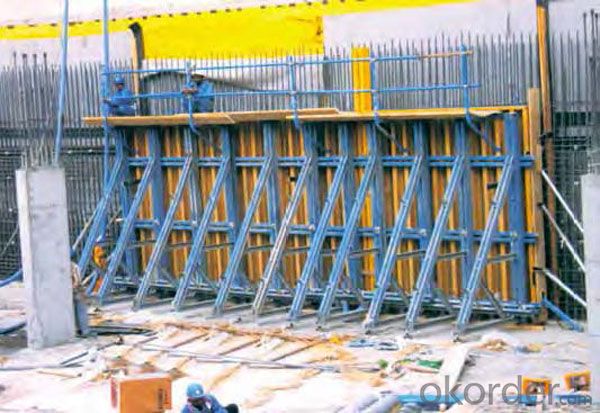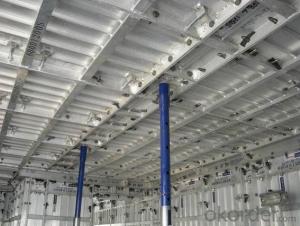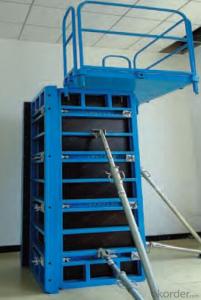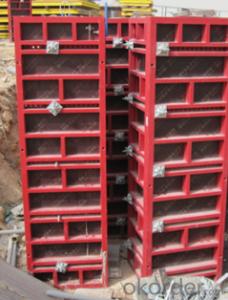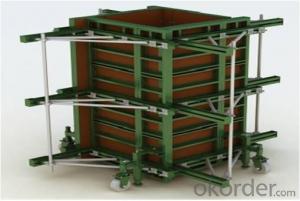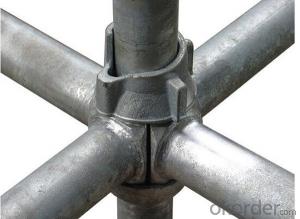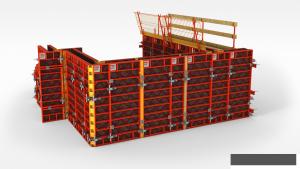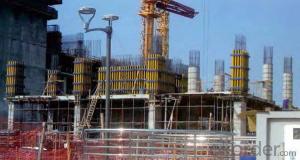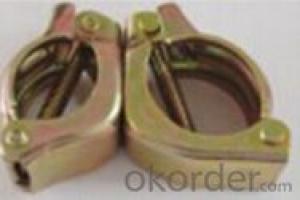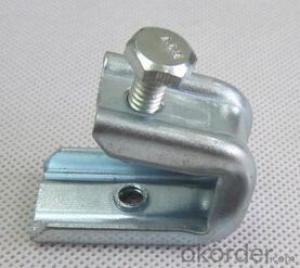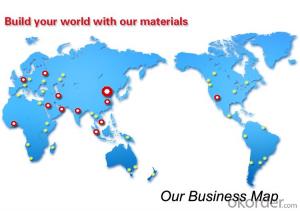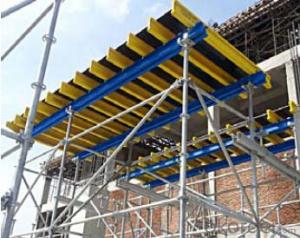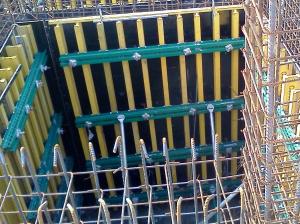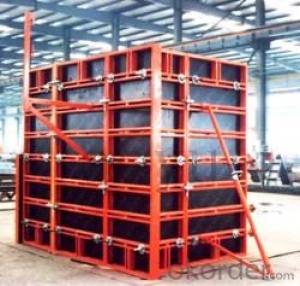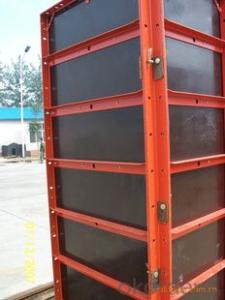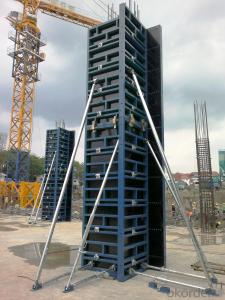Planks Of Wood For Scaffolding Formwork Clamp For Scaffolding Low Price
- Loading Port:
- Tianjin
- Payment Terms:
- TT OR LC
- Min Order Qty:
- 6000 set
- Supply Capability:
- 50000 set/month
OKorder Service Pledge
OKorder Financial Service
You Might Also Like
Planks Of Wood For Scaffolding Formwork Clamp For Scaffolding Low Price
Developing with new technology materials, steel formworks is no longer a must in construction concrete process. More and more buildings are established with plastic formworks. And workers love this new formworks much more.
The advantages of plastic formworks:
Scaffolding Screw Jack Formwork Scaffolding China Low Price
1.First of all--light
Yes it is the first advantage of plastic formwork. It wins the great praise of both contractors and workers.
The biggest panel is 120×1500px,weights 10.5kg only. It can be lift and set up by one person easily, which means there is no need for cranes on site.Saves a lot of cost and time.
2.Easy set up
Different size of panels can firmly locked by simply turn the special handles to 90 degree. The Panels has rib on the back, which makes the system need not traditional wood blocks and nails. The panels have holes to fit tie rod, guarantee the strength of the whole system.
3.Modularity
Modular formworks composed by different size of panels,the main item is 120×1500px panel,which is used for the large area of walls and slabs. There are also small size of panels like 10×1500px,20×1500pxcm,25×1500px,inner corner 20×20×1500px and outer corner 10×5×1500px.Due to the variety of panel size, the system can form almost all size walls 120×1500px panel of multiply by 125px. The material of modular formwork is PC-ABS mixed with special glass fibers which enable panels to hold high pressures.
4.Strength
The handles are made by high strength Nilon, each panel locked by at least 4 handles, which makes the whole system strong enough to pour 1000px walls.
Planks Of Wood For Scaffolding Formwork Clamp For Scaffolding Low Price
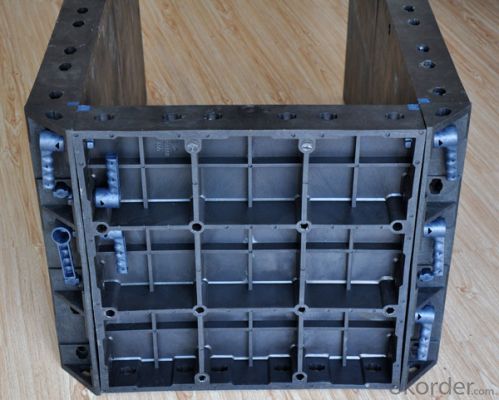
Planks Of Wood For Scaffolding Formwork Clamp For Scaffolding Low Price
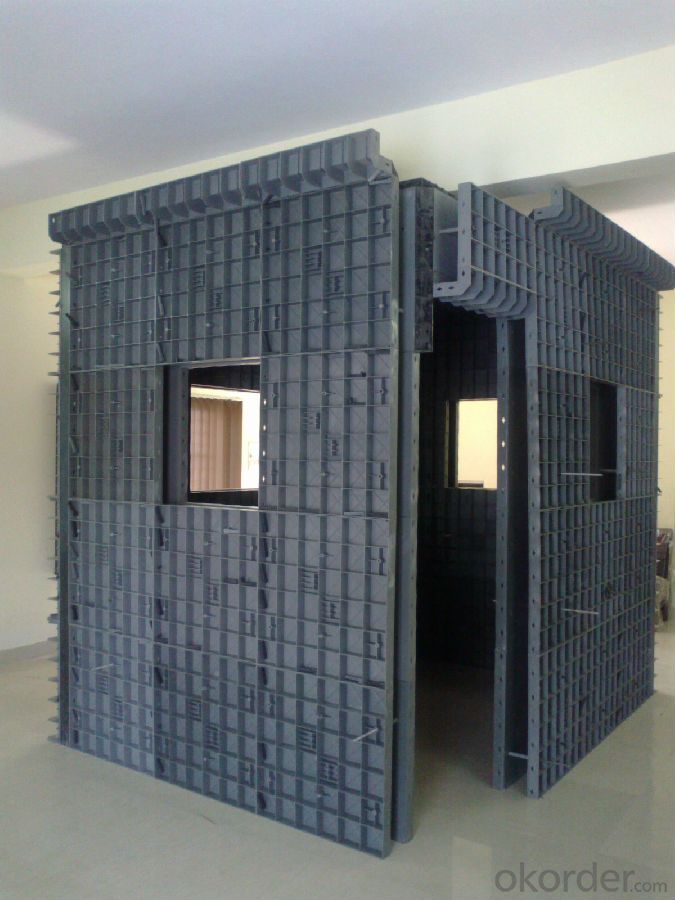
Planks Of Wood For Scaffolding Formwork Clamp For Scaffolding Low Price
- Q: How does steel frame formwork accommodate for changes in concrete temperature?
- Steel frame formwork accommodates for changes in concrete temperature through its flexibility and thermal conductivity properties. Firstly, the steel frame formwork system is designed to be flexible and adjustable. This allows it to adapt to changes in the dimensions of the concrete elements caused by temperature variations. As concrete expands or contracts due to temperature changes, the steel formwork can be easily adjusted to accommodate these alterations. This flexibility ensures that the formwork remains in its proper position, preventing any distortion or cracking of the concrete structure. Secondly, steel has a high thermal conductivity, which means it can effectively transfer heat. This property allows the steel frame formwork to quickly absorb and dissipate the heat generated by the setting and curing of concrete. As the concrete temperature rises, the steel formwork helps in dissipating the excess heat, preventing any potential damage to the concrete due to excessive temperature rise. Similarly, during cold weather conditions, the steel frame formwork helps in conducting heat and preventing the concrete from freezing, which can lead to cracking and reduced strength. Overall, the flexibility and thermal conductivity properties of steel frame formwork ensure that it can effectively accommodate for changes in concrete temperature. This helps in maintaining the structural integrity of the concrete elements and ensuring a durable and long-lasting construction.
- Q: What are the different types of coatings available for steel frame formwork?
- Steel frame formwork has several coatings available, each with their own unique properties and advantages. These coatings are designed to protect the formwork from corrosion, improve durability, and enhance overall performance. 1. Galvanizing, or zinc coating, is commonly used and provides excellent corrosion resistance by creating a protective layer on the steel surface. It is highly durable and suitable for both indoor and outdoor applications. 2. Epoxy coatings are known for their high chemical resistance and durability. They are applied in multiple layers to create a strong barrier against corrosion, chemicals, and abrasion. These coatings also adhere well to the steel surface for long-lasting protection. 3. Polyurethane coatings are resistant to weathering and UV radiation. They offer a flexible protective layer that can withstand extreme temperatures and mechanical stress. These coatings also provide good chemical resistance and are commonly used in demanding environments. 4. Powder coating is a popular choice due to its aesthetic appeal and durability. A dry powder is applied to the steel surface and then heated to form a protective coating. Powder coatings come in a variety of colors and finishes, making them suitable for architectural purposes. 5. Paint coatings are the most common and cost-effective option. They come in different types, such as acrylic, alkyd, and epoxy paints. While they may not offer the same level of corrosion resistance, proper surface preparation and maintenance can ensure long-lasting protection. When choosing a coating for steel frame formwork, it is important to consider the specific project requirements, including the environment, exposure to chemicals or moisture, and aesthetic considerations. Consulting with a coating specialist or professional engineer can help determine the most suitable coating type for specific applications.
- Q: How does steel frame formwork handle the construction of suspended slabs and beams?
- Steel frame formwork is a highly versatile and efficient system for constructing suspended slabs and beams. The steel frames provide robust support and stability, ensuring the proper alignment and leveling of the formwork. This enables the construction of large spans and complex geometries with ease. The formwork panels are easily adjustable and can be reused multiple times, making it a cost-effective solution. Additionally, the use of steel frame formwork allows for faster construction timelines and ensures high-quality finishes. Overall, steel frame formwork is an excellent choice for handling the construction of suspended slabs and beams due to its strength, flexibility, and efficiency.
- Q: What types of finishes can be achieved with steel frame formwork?
- Steel frame formwork can achieve a variety of finishes, including smooth, textured, or patterned surfaces. The choice of finish depends on the desired aesthetic and functional requirements of the structure.
- Q: Can steel frame formwork be used for both light and heavy-duty concrete structures?
- Yes, steel frame formwork can be used for both light and heavy-duty concrete structures. Steel frame formwork is known for its durability and strength, making it suitable for various construction projects. For light-duty concrete structures, such as residential buildings or low-rise structures, steel frame formwork provides the necessary support and stability during the pouring and curing process. It allows for easy assembly and disassembly, enabling efficient construction. On the other hand, steel frame formwork is also capable of withstanding the high pressures and loads associated with heavy-duty concrete structures. These structures typically include high-rise buildings, bridges, and other large-scale infrastructure projects. The strength and rigidity of steel formwork ensure that it can handle the weight and forces exerted by the concrete, ensuring the structural integrity of the building or structure. In addition to its strength and durability, steel frame formwork offers advantages such as reusability, versatility, and accuracy. It can be easily customized to fit various shapes and sizes, allowing for flexibility in design. The use of steel formwork also results in smooth and precise concrete finishes, enhancing the overall aesthetics of the structure. Overall, steel frame formwork is a versatile and reliable choice for both light and heavy-duty concrete structures. Its strength, durability, and adaptability make it an ideal solution for various construction projects, ensuring the successful completion of the project while meeting the desired quality and safety standards.
- Q: Can steel frame formwork be used for the construction of commercial buildings?
- Yes, steel frame formwork can be used for the construction of commercial buildings. Steel frame formwork consists of steel panels and frames that are designed to provide support and shape to the concrete structure during the construction process. It offers several advantages for commercial building construction. Firstly, steel frame formwork is highly durable and can withstand the pressures and stresses associated with large-scale commercial projects. It has a longer lifespan compared to other types of formwork, making it a cost-effective choice in the long run. Secondly, steel frame formwork is highly adaptable and can be easily customized to meet the specific needs and requirements of commercial building projects. It allows for flexibility in design, enabling architects and engineers to create complex structures and unique architectural features. Furthermore, steel frame formwork provides excellent stability and support, ensuring the structural integrity of the building during and after construction. It can handle heavy loads and is capable of withstanding adverse weather conditions, making it suitable for commercial buildings that require strength and durability. Additionally, steel frame formwork offers faster construction times compared to traditional formwork methods. The prefabricated steel panels can be easily assembled and disassembled, allowing for efficient and streamlined construction processes. This can result in significant time and cost savings for commercial building projects. In conclusion, steel frame formwork is indeed a suitable choice for the construction of commercial buildings due to its durability, adaptability, stability, and efficiency. It provides the necessary support and shape for concrete structures, ensuring the successful completion of large-scale projects.
- Q: How does steel frame formwork reduce the need for additional support structures?
- Steel frame formwork reduces the need for additional support structures by providing a strong and durable framework that can withstand the weight and pressure of the concrete during construction. This eliminates the need for additional columns, beams, or scaffolding, saving time and resources in the construction process.
- Q: Can steel frame formwork be used in underground construction projects?
- Yes, steel frame formwork can be used in underground construction projects. Steel frame formwork is a versatile and durable system that is commonly used in various construction applications, including underground projects. Its strength and rigidity make it suitable for withstanding the pressures and forces associated with underground construction. Steel frame formwork is typically made of high-grade steel, which provides excellent structural integrity and resistance to deformation. This makes it ideal for use in underground projects, where there may be increased levels of pressure from the soil and surrounding environment. Moreover, steel frame formwork offers flexibility in design and can be easily customized to meet the specific requirements of underground construction projects. It allows for the creation of complex shapes and structures, which are often necessary in underground constructions such as tunnels, subway systems, and basements. Additionally, steel frame formwork is known for its reusability, which can significantly reduce costs and environmental impact in underground construction. The formwork can be easily dismantled, moved, and reassembled in different locations, making it a cost-effective choice for projects that involve multiple construction phases. In summary, steel frame formwork is a suitable choice for underground construction projects due to its strength, durability, flexibility, and reusability. It offers the necessary structural support and adaptability required for the challenges associated with underground construction, making it a preferred choice for many engineers and contractors.
- Q: How does steel frame formwork handle different concrete loads?
- Designed to support the weight and pressure of concrete during pouring and curing, steel frame formwork is a sturdy and rigid structure. Constructed using high-quality steel materials, the formwork system consists of frames, cross-braces, and adjustable props, which are assembled to define the shape and size of the concrete structure. The frames are designed to evenly distribute the load across the surface, ensuring uniform support for the concrete. With their robust construction and adjustability, the steel frames can withstand high concrete loads without deformation or failure. Furthermore, they provide stability and resist lateral forces during the pouring process. To accommodate different concrete loads, the steel frame formwork can be customized by adjusting the spacing and size of the frames and adding additional bracing or support elements as needed. This flexibility allows for adaptation to various construction projects, from small residential structures to large-scale commercial buildings. In conclusion, steel frame formwork offers a strong and stable support structure that evenly distributes the weight of concrete. Its robust construction and customization options make it a reliable and versatile solution for handling varying concrete loads in construction projects.
- Q: Can steel frame formwork be used for both straight and curved beams?
- Yes, steel frame formwork can be used for both straight and curved beams. Its flexibility and adjustability allow it to accommodate different shapes and sizes, making it suitable for constructing both straight and curved beams.
Send your message to us
Planks Of Wood For Scaffolding Formwork Clamp For Scaffolding Low Price
- Loading Port:
- Tianjin
- Payment Terms:
- TT OR LC
- Min Order Qty:
- 6000 set
- Supply Capability:
- 50000 set/month
OKorder Service Pledge
OKorder Financial Service
Similar products
Hot products
Hot Searches
Related keywords

